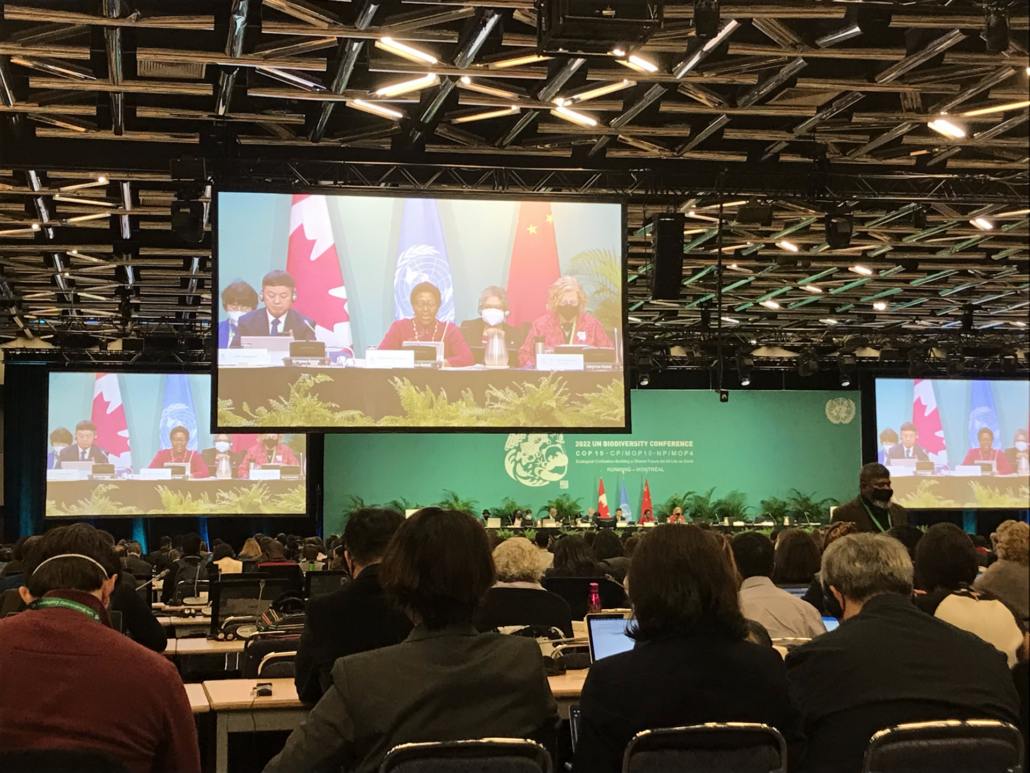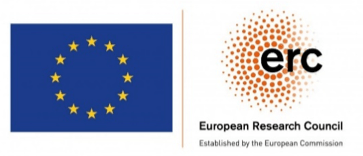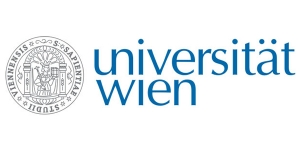Marine Issues and Digital Sequence Information at CBD COP15.2: Lessons and implications for the upcoming BBNJ negotiations?
By Silvia Ruiz Rodríguez and Paul Dunshirn
This contribution is part of a MARIPOLDATA blog series on current developments and discussions about marine biodiversity negotiations – more specifically, 1) the negotiations towards an international legally binding instrument under the United Nations Convention on the Law of the Sea on the conservation and sustainable use of marine biological diversity of areas beyond national jurisdiction (BBNJ) and 2) the second part of 15th Conference of the Parties (COP15.2) to the Convention on Biological Diversity (CBD). In this blog post, we elaborate on the discussions and outcomes of the Kunming-Montreal Global Biodiversity Framework (GBF) and the CBD decision on digital sequence information (DSI) with a focus on marine issues. Additionally, we point out links with the second part of the 5th Intergovernmental Conference (IGC5.2) of the BBNJ negotiations

Opening plenary of the CBD COP 15.2. (Source: own ethnographic data)
Marine issues in the Kunming-Montreal Global Biodiversity Framework
The Kunming-Montreal Global Biodiversity Framework (GBF) aims to halt and reverse global biodiversity loss through the achievement of four goals by 2050 and 23 action-oriented targets by 2030. Such goals and targets contribute to the Agenda for Sustainable Development (CBD COP15.2, dec. 15.4, Annex, para. 26) and pave the way for states to achieve the “shared vision of living in harmony with nature” by 2050 (para. 3).
The GBF was negotiated by state parties to the CBD during the sessions of the Open-Ended Working Group on the Post-2020 Global Biodiversity Framework (WG2020), which met five times between August 2019 and December 2022 and delivered the GBF draft to the COP15.2. While there are numerous marine issues across different targets of the GBF, we focus on the discussions on targets 1, 2, and 3 at COP15.2 as the scope of application of these targets might be subject to different interpretations.
Spatial planning of activities
Target 1 aims to ensure that states implement management plans for activities carried out on all terrestrial and marine areas to decrease biodiversity loss. During COP 15.2, discussions on this target revolved around the geographical reach and types of ecosystems that the target would address, as well as its feasibility.
Similar to discussions throughout the sessions of the WG2020, states struggled over the application of the target to only areas within national jurisdiction or both areas within and beyond national jurisdiction. On the one hand, arguments for circumscribing target 1 to areas within national jurisdiction relied on a narrow interpretation of the applicability of the CBD to national jurisdiction (CBD art. 4) and its relation to other international instruments (CBD art. 22; Prip, 2022). On the other hand, arguments supporting the applicability of target 1 to areas within national jurisdiction and areas beyond national jurisdiction promoted the coexistence of CBD and UNCLOS on the high seas with regard to biodiversity protection (Prip, 2022).
States had heated debates about whether the target would “retain” “intact ecosystems” or “critical and intact ecosystems.” States of the Global North struggled over the protection of such ecosystems while states of the Global South provided an array of arguments against such references. Firstly, retaining “intact ecosystems” would place a disproportionate burden on states of the Global South, which have a higher extent of wild areas in comparison to states of the Global North. Secondly, most ecosystems have been affected by anthropogenic activities. Thirdly, the meaning of “critical ecosystems” is unclear.
Against this scenario, states of the Global North proposed to replace “intact ecosystems” with “ecosystems that are hard to restore.” This proposal was nevertheless not accepted by their counterparts of the Global South. In the spirit of compromise, states agreed to “bring the loss of (…) ecosystems of high ecological integrity, close to zero” under target 1.
Restoring degraded areas of ecosystems
Target 2 aims to restore 30% of degraded land, inland water and marine areas to improve the state of the ecosystems. Debates focused on the numeric element, the purpose of the target, as well as types of ecosystems and areas to restore.
Similar to discussions at the WG2020, disagreements lay on whether the number should be absolute or relative. State actors supporting an absolute number, such as the European Union (EU), the Russian Federation, Samoa, and Switzerland preferred to protect hectares of areas. The EU, particularly, aimed to refer to a billion hectares of areas. States supporting a relative number, such as Australia, Brazil, Dominican Republic, India, Maldives, and Mexico, among others aimed to protect a percentage of areas. Although absolute numbers are needed for calculating a relative one, states agreed on representing the numeric element as a percentage to keep consistency with target 3.
The purpose of the target was also a topic of debate. The EU proposed that the restoration of areas would achieve an “increase of area of natural ecosystems” while Argentina, Kenya, Switzerland, and the United Kingdom proposed that the restoration of areas would “enhance biodiversity, and ecosystem services, ecological integrity and connectivity.” The first option might imply a gradual geographic expansion of the reach of the target before 2030. In contrast, the second option fails to suggest such a gradual increase. Consensus was reached on the second option with the addition of “ecosystem functions,” giving states flexibility to restore natural ecosystems, as well as altered and managed ones like aquaculture ponds.
Implementation of protected areas
Target 3 aims to guarantee that states conserve 30% of land, inland water and marine areas through protected areas and other effective area-based conservation measures (OECMs) while recognizing the rights of Indigenous Peoples and Local Communities (IPLCs). Some of the disagreements focused on the numeric element and the scope of the application.
Similar to discussions throughout the sessions of the WG2020, the numeric element was an object of debate. At COP15.2, differences lay on the specific percentage (30%, 20%, 13%, or even 10%), and whether this percentage would apply to 1) terrestrial and inland water and 2) marine ecosystems together or separately. The higher the percentage, the more efforts states have to undertake to achieve the target. Moreover, applying the percentage to land, inland water and marine areas separately increases these efforts even further. This was particularly challenging for some states of the Global South whose economies depend on the extraction of natural resources for the most part. States could not reach a compromise in the open sessions of COP15.2, resulting in the solution of this issue by state ministers who agreed to protect 30% of 1) land and inland water and 2) marine areas separately. In other words, states would fail to reach the target if they protect 20% of terrestrial and freshwater areas and 10% of marine areas.
The scope of application of target 3 was also an object of debate. At COP15.2, states struggled over the conservation and management 1) “of all land and of ocean” or 2) “of terrestrial and inland water, and of coastal and marine areas.” As the “ocean” contains both national and international waters, reference to the “ocean” might have enabled the implementation of marine protected areas and OECMs in areas within and beyond national jurisdiction. Australia, Cook Islands, Costa Rica, Israel, Maldives, Samoa, Saint Lucia, and Tonga, among others, supported this reference.
The wording “coastal and marine areas” has been interpreted in the context of the CBD as a phrase that mostly applies to national jurisdiction. It might also imply both national and international waters, providing interpretative flexibility to the text. Brazil, the EU, India, Norway, and the Russian Federation supported the reference to “coastal and marine areas” for consistency with Aichi target 11. Parties decided to refer to “coastal and marine areas” in target 3 despite the unconformity of countries that supported reference to the “ocean.”
Decision on DSI and its contribution to the GBF
A core element of the CBD is its system for access and benefit-sharing for genetic resources. The Nagoya protocol has introduced a system that attributes a substantial level of sovereignty to nation states over their genetic resources, requiring users to enter mutually agreed terms with provider countries to ensure the sharing of benefits. Importantly, this framework is generally limited to genetic materials, even though the relationship to DSI has always been a source of contention. As DSI is central to a range of Research and Development (R&D) activities, parties to the CBD strived to find solutions during COP15.2.. This resulted in several decisions on the nature of a future multilateral mechanism, some of which appear of particular importance to the BBNJ discussions.
As it relates to the very question of whether benefits from DSI should be shared, COP15.2 “agrees that the benefits from the use of digital sequence information on genetic resources should be shared fairly and equitably” (CBD COP, dec. 15.9, para. 2). This can be read as a general recognition that the CBD should develop a system beyond benefit-sharing on genetic materials. In preparation for BBNJ IGC-5.2, this has created a discussion about the meaning of the phrase ‘benefits from the use of DSI’. As some suggest (Oldham et al., 2023), this implies that benefits need to be assessed based on evidence of DSI use. In other words, monetary benefits cannot be shared if they are ‘decoupled’ from use, but need to be informed by individual or aggregate use. This interpretation of the decision essentially implies that some form of traceability needs to be implemented in combination with the future benefit-sharing system. The question about the extent to which monetary benefit-sharing on DSI and traceability need to go hand-in-hand will also be of key importance for the BBNJ negotiations, where it would make sense to find solutions compatible with the CBD decisions (Langlet & Dunshirn, 2023; Oldham et al., 2023).
Concerning the question of traceability, COP15.2 “recognizes that tracking and tracing of all digital sequence information on genetic resources is not practical” (CBD COP, dec. 15.9, para. 5). The discussions that have inspired this decision have revolved around the complexity of tracing DSI. Research practices involve comparing hundreds or thousands of DSI (Scholz et al., 2022). Thus, scientific observers to COP 15.2. have argued that a comprehensive track and trace system of all of these uses may cost more than it may contribute to the overall goal of establishing a monetary benefit-sharing system on DSI (Scholz et al., 2022). Additionally, a track and trace system on DSI can never be fully comprehensive, as users may download DSI and analyze or further share it directly outside the established infrastructures (Rohden et al., 2020). However, some commentators emphasize that the decision concerns track and trace of all DSI, implying that it may be practical for some DSI (Oldham et al., 2023).
COP15.2 also “decides to establish […] a multilateral mechanism for benefit sharing from the use of digital sequence information on genetic resources, including a global fund” (CBD COP, dec. 15.9, para. 16). This decision is a clear break with the bilateral access and benefit-sharing system for genetic resources introduced under the Nagoya protocol. Instead, it introduces a novel multilateral mechanism. The relationship between these novel multilateral and bilateral systems remains unclear, and it is conceivable that hybrid forms will be discussed moving forward. As some observers have argued, a multilateral system is particularly suitable for DSI, as many research practices may use DSI from hundreds of different origins in one search, making it hard to imagine how this should be dealt with in a purely bilateral manner (Scholz et al. 2022).
Overall, the decision on DSI provides guidelines for the further construction of a multilateral benefit-sharing mechanism. As guidelines, they are not legally binding and it is up to state parties to further sketch out the system they sketched out during COP15.2.
Why should we care about the CBD COP 15.2 when negotiating the BBNJ treaty during the coming weeks?
BBNJ negotiators should keep in mind discussions and outcomes of the CBD COP15.2 to facilitate synergies and collaboration between both instruments. Targets 1, 2, and 3 of the GBF are particularly relevant for the package element on area-based management tools, including marine protected areas.
Two outstanding, interrelated reasons come to the fore. Firstly, it is necessary to conduct marine spatial planning (GBF target 1) to implement area-based management tools and marine protected areas (GBF target 2), restore degraded marine ecosystems (GBF target 3) and protect the marine environment under the CBD and BBNJ instruments. Secondly, the ecological connectivity of the ocean – through species’ movement and genetics, horizontal and vertical currents, as well as culture – requires coherent management and protection measures across areas within and beyond national jurisdiction for the conservation and sustainable use of marine biodiversity (Dunn et al., 2019; Mossop & Schofield, 2021; Mulalap et al., 2020; O’Leary & Roberts, 2018; Popova et al., 2019; Tessnow-von Wysocki and Vadrot, 2022; UNEP‐WCMC, 2018). Agreeing on complementary and mutually supporting measures between the CBD and BBNJ instruments is essential for taking management and conservation actions that ensure species’ persistence and increase ecosystems’ productivity (Berger et al., 2022). This would improve the health of marine ecosystems and protect economic sectors, such as fisheries and tourism.
The CBD COP15.2 decision on DSI is also particularly relevant for the BBNJ negotiations as it is inextricably linked to the package element on marine genetic resources (MGRs). Some negotiating parties to BBNJ have so far opposed including DSI in the treaty text to not forgo CBD decisions. Now that the decisions are on the table, it will be a great opportunity for negotiators to work towards a harmonized multilateral system. Distinguishing DSI from areas beyond national jurisdiction and areas within national jurisdiction on the existing genetic sequence databases is generally tricky and at present not supported by database providers (Langlet & Dunshirn 2023). Establishing functional governance frameworks for MGRs is key to achieving sufficient legal certainty for users and enabling benefit-sharing and capacity-building for the Global South. Enabling a variety of communities to use and benefit from marine biotechnology can go a long way in establishing blue economies that work for both people at the same time as contributing to ecosystem conservation (Blasiak et al. 2023).
Cross-fertilization between the CBD COP15.2 and the BBNJ IGC5.2 is essential for the success of the international community in the efforts toward the conservation and sustainable use of marine biodiversity. It can only help to harmonize international marine legislation, bringing global environmental governance a step forward in its path to coherent and effective protection and management of the world’s oceans.
Silvia Ruiz Rodríguez and Paul Dunshirn are associated researchers of the ERC Project MARIPOLDATA. Paul is a prae-doc at the Research Platform Governance of Digital Practices. Silvia’s on-site participation at COP15.2 and WG2020-5 was possible due to the generous support of MARIPOLDATA, the sowi:docs Fellowship Programme and the advancement scholarship of the University of Vienna.


